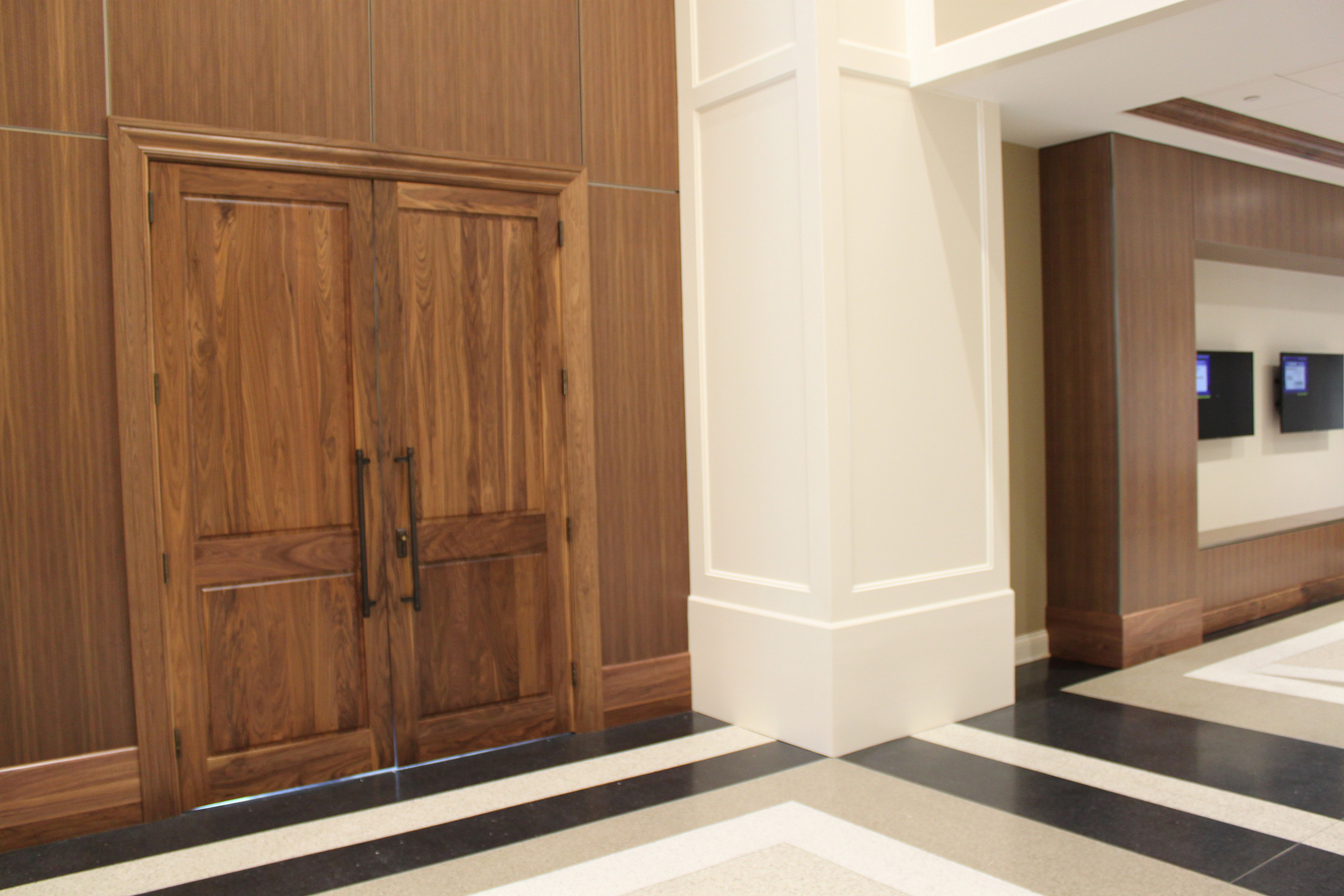
Veneer Matching 101: How to Achieve Stunning Wood Grain Patterns
When it comes to creating beautiful wood veneer products, one of the most critical decisions is how to match the individual veneer leaves to achieve the desired visual effect. Whether you’re looking for symmetry, natural randomness, or something in between, veneer matching techniques allow designers and architects to control the appearance and character of the final product. Let’s dive into the most common veneer matching methods and how they impact both aesthetics and practicality.
What is Veneer Matching?
Veneer matching is the process of aligning and assembling veneer leaves to create specific patterns or visual effects. The choice of matching technique, combined with the cutting method and the species of wood, has a significant impact on the final appearance. Understanding the different matching options gives designers and architects more control over the end-product.
The Veneer Matching Process
Before any matching can take place, veneer leaves must be trimmed to the appropriate size. Next, these leaves are inspected for defects, then adhesive is applied, and the leaves are spliced together to form a veneer sheet. The number of veneer leaves per sheet depends on the size and intended use of the sheet, such as for doors or panels.
Let’s explore some of the most popular matching techniques.
1. Book Match: Symmetry and Continuity
The most commonly used matching technique in the industry, book matching involves flipping every other veneer leaf as it is placed, much like turning the pages of a book. This method creates a symmetrical pattern where the grain on pairs of leaves mirrors one another, resulting in a visually continuous design.
Considerations:
• Aesthetic: Book match is ideal for those who want a symmetrical and continuous wood grain pattern. However, it can result in an effect called "barber pole" where alternating leaves reflects light and absorbs stains differently, leading to a striped appearance.
• Cost: It is a cost-effective choice because it’s a standard method, but designers must weigh the risk of the barber pole effect.
2. Slip Match: Consistency Without Mirroring
In slip matching, the veneer leaves are placed sequentially without flipping, so each piece has the same orientation. This eliminates the mirrored effect of book match and results in a more consistent, repetitive grain pattern. Slip match is often used with quarter-sliced or rift-cut veneers.
Considerations:
• Aesthetic: Slip match minimizes the risk of barber poling and creates a uniform appearance. However, the repeating grain pattern may not be desirable for large surfaces where variety is preferred.
• Practical: This technique is well-suited for quarter-sliced veneers, where a straight grain is important. In some cases, the grain can appear sloped due to natural variations in grain direction.
3. Random Match: Embracing Natural Variations
Random matching is exactly what it sounds like—veneer leaves are placed without any specific attention to aligning grain patterns. This method celebrates the natural variations in the wood, resulting in a more organic and less structured appearance.
Considerations:
• Aesthetic: Random match is great for projects with a rustic or natural feel. It also allows for more artistic freedom since there’s no need to follow a strict pattern.
• Practical: While this method can save time in some respects, creating a truly random look often requires sorting through many stacks of veneer, making it more labor-intensive.
4. Continuous and End Match: Seamless Visual Flow
For projects that require a unified appearance between doors and transoms, continuous and end matching offer solutions that create a seamless flow. Continuous match uses one piece of veneer for both the door and transom, while end matching aligns veneer sheets at their ends to create a mirrored pattern.
Considerations:
• Aesthetic: These methods are ideal for achieving harmony between adjacent panels, creating a seamless look. They are often used for large surfaces or premium projects.
• Practical: While these techniques can be visually appealing, they tend to be more expensive due to the extra labor and material required.
5. Barber Pole Effect: A Risk with Book Match
One challenge of the book match technique is the potential for the "barber pole" effect. This occurs because the two sides of each veneer leaf reflect light and absorb stain differently. The result can be a noticeable contrast between alternating leaves, which may not be desirable for all designs.
Mitigating Barber Pole Effect:
• Using a dark transparent stain can help minimize the barber pole effect by evening out the color variations across the surface.
• Slip match can also be used to avoid this effect since there is no flipping of veneer leaves.
Other Matching Techniques: Full Design Control
• Reverse Slip Match: This method involves flipping every other leaf end-to-end to break up the grain pattern. It can reduce the risk of sloping grain and add visual variety.
• Set and Pair Match: These techniques are used when multiple doors need to look similar. Set matching ensures continuity across several doors, while pair matching is used for just two doors. These methods provide a harmonious appearance for adjacent panels or doors.
Standards for Matching Tolerances
It’s important to recognize that achieving perfect veneer matching across large surfaces, especially doors with transoms, can be challenging due to the natural variability of wood. The Window and Door Manufacturers Association (WDMA) provides guidelines that allow for slight variations in grain continuity. For instance, a variation of 3/8” is allowed for single doors, while a 1/2” variation is acceptable for pairs of doors with a single transom.
Final Thoughts: Choosing the Right Match for Your Project
When it comes to veneer matching, the best choice depends on the desired visual effect and the specific needs of the project. Whether you opt for the symmetry of book match, the consistency of slip match, or the organic feel of random match, understanding these techniques will help ensure that your final product meets your design goals.